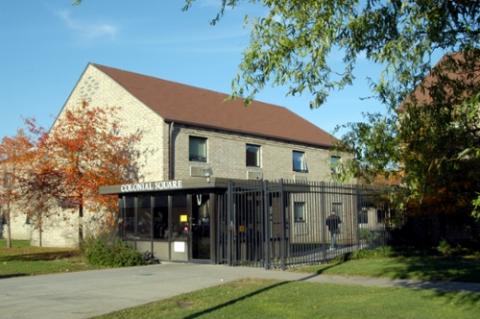This is a story about label makers. Not the little devices used to make labels in the office, but the people in power who use labels to their advantage. This is also a story about mislabeled things: the protestors who try to scrub off the stickers unfairly placed on them. People in power stick these labels on protestors to distract from their own failures.
In the summer of 2020, Black Lives Matter (BLM) protests sprung up around in response to the death of George Floyd at the hands of a police officer paired with centuries of police brutality and racism. The public remembers these protests as violent. In Sept. 2020, The Armed Conflict Location & Event Data Project reported that only 7% of the protests were violent, but 43% of the public believed that the majority of the protests were designed to “incite violence or destroy property.”
This difference in perspective shows that the BLM protests were intentionally labeled as something they were not. “Violent” is not the only label unfairly placed on protestors.
Last spring, officials at New York University (NYU) asked police to clear a Gaza Solidarity encampment on their campus, citing the demonstration as antisemitic, among other things. During the Jewish festival of Sukkot last month, NYU administration said a Sukkah – a temporary structure built to celebrate the week-long holiday – raised in solidarity with Gaza was unapproved.
While sweeping away encampments, NYU acted like they cared about Jewish people and used that reason to disperse and silence protests. Yet, forcing students to take down their Sukkah makes a clear point that abolishing hate speech on campus was not the goal. If they cared about Jewish people, they would be invested in the rights of people to practice Judaism as they choose.
Politicians and campus administrators alike put the label of “antisemitic” on the Pro-Palestine movement. This ranged from the rhetoric that there is inherent antisemitism in advocating for Gaza to the idea that antisemitism is widespread in the movement. Yes, some members of the Gaza solidarity movement use antisemitism to fuel hateful ideas. However, when institutions label the entire movement as antisemitic, they distract from the actual perpetrators of antisemitism and the real reasons people are protesting in the first place, ultimately hurting both Jewish people and protestors in the long run.
Why do these labels exist? People in power put labels like “antisemitic” and “violent” on protestors to distract from their own behavior. This is apparent in the way protests arise.
Protests are brought on by oppression from a more powerful body. In the case of BLM, the oppression came from perpetrators of police violence – for Gaza, the Israeli government and their backers. When oppressed groups are prevented from diplomatically expressing their grievances, they must turn to other methods to call attention to issues. From this, both disruptive and peaceful protests are born. Protests must be loud enough to get the systems that oppress them to listen. When oppressors hear protestors gaining traction, they use labels to distract the public from issues the oppressors have caused.
By conflating everything protestors are doing wrong, perpetrators of oppression effectively discredit protestors and wash their own hands of any wrongdoing. They make labels louder than the protests. For fear of being labeled as violent or antisemitic, the public stops listening to protestors, thus abandoning movements. There is power in numbers, which makes oppressors feel the pressure to enact change when large groups of people protest. By placing smoke and mirrors in front of the rest of the public, oppressors control the size of movements. If this works, the systems that oppress get away with changing nothing.
This system of labels and distancing works because it makes people uncomfortable. They are uncomfortable with their potential role in oppression. Assimilating and labeling protestors as “insert negative term” is easier than facing their own bias.









Eric • Nov 30, 2024 at 11:46 pm
The PLO, Fatah, Hamas, and Hezbollah play an active role in oppressing the Palestinian people. Since 1952 the Palestinian people have been represented by these terrorist organizations that do not have their best interests of Palestinians at heart; PLO, Fatah, Hamas, and Hezbollah. All of these groups have stolen tens of billions of dollar intended for the Palestinian people, to line the pockets of their leadership and to fund acts of terror. Because of this the Arabs in the West Bank and Gaza live in squalor and poverty unable to use that money to build a functioning economy. While used as civilian population as human shields who pay the ultimate price. Any Palestinian who speaks out against this pays with their life.
Just like the Hofstra SVP used its two most recent on campus protests to harass and intimate students who are American citizens and have nothing to do with Israeli policy. All that mattered is that they are Jewish. Which does make the SVP protests an act of antisemitism.